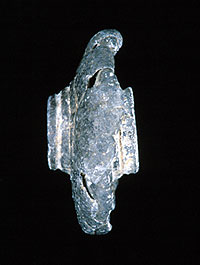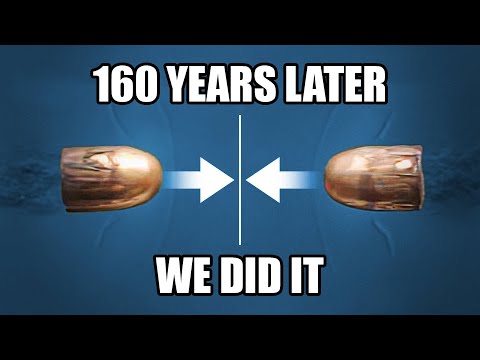In debates about ballistic missile defence, destroying an incoming warhead with a kinetic kill vehicle was often derided by opponents as “hitting a bullet with a bullet”, used as a metaphor for the impossible. But in the Smithsonian Institution’s National Museum of American History collection, there are two Minië balls fired at the Battle of Fredericksburg, Virginia in 1862 during the U.S War of Secession which apparently met in mid-flight and fused together.

Is this just one of those things so rare it may have only ever happened once, or is it possible to reproduce with modern technology?
In the experiments in this video, the bullets uniformly fragmented rather than fusing together, even when fired with low velocity loads simulating projectiles from black powder rifles having lost velocity during flight. My guess is that this might be due to the different composition of the bullets. Minie balls in the 1860s were usually cast from nearly-pure lead, as they counted on expansion of the soft metal to expand the skirt at the bottom of the bullet to engage the rifling of the barrel. Modern bullets made mostly of lead typically use alloys, usually including antimony, which hardens the lead, reduces deposition of lead in the rifling, and increases accuracy. However, antimony dramatically increases the brittleness of the alloy and its tendency to fragment on impact. It would be interesting to repeat the experiment with pure lead bullets to see if fusion of two bullets could be demonstrated. (As noted in the video, it may be difficult to achieve the required consistency in accuracy with home cast bullets.)
What happened at 21:28 in the video is simply stunning.
